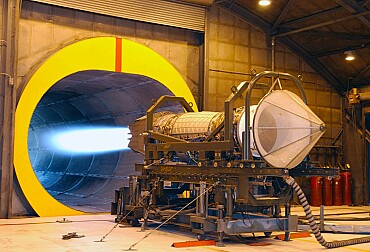Bombardier awarded U.S. Army prototyping contract for HADES spy plane
The U.S. Army has taken a significant step towards enhancing its aerial intelligence capabilities by awarding Bombardier Defense a contract for the development of the HADES (High Accuracy Detection and Exploitation System) spy plane prototype. This initiative marks a shift in the Army's reconnaissance approach, leveraging business jets for advanced surveillance operations.

Contract details and financial implications
The contract, formalized on December 12, entails the provision of one Global 6500 jet, with the Army retaining the option to acquire two additional aircraft for the HADES project. This initiative aims to replace the aging RC-12 Guardrail system. The initial contract for the first plane is valued at $66.4 million, with a ceiling of $140 million to potentially include two more aircraft for HADES prototypes.
HADES: A leap in ISR capabilities
HADES represents a significant advancement in the Army's ISR (Intelligence, Surveillance, and Reconnaissance) depth. According to Col. Joe Minor, the project manager for fixed-wing aircraft, HADES will offer increased range, speed, endurance, and the ability to operate at higher altitudes compared to legacy turboprop platforms. This elevation translates into an enhanced ability for deep sensing, a crucial operational imperative for the Army's 2030 vision.
Background and context
The Army's interest in jet-based ISR capabilities dates back to 2020, beginning with the acquisition of aerial technology demonstrators like ARTEMIS (Airborne Reconnaissance and Target Exploitation Multi-Mission System) aboard a Leidos jet. ARTEMIS served as a preliminary step, testing sensor integration on jets and was notably deployed in the Indo-Pacific Command’s Area of Operation and Eastern Europe during the early stages of the conflict in Ukraine.
Phase one of HADES
The HADES project, now approved for middle-tier acquisition for rapid prototyping, will initially feature two different aircraft equipped with distinct sensor packages. The objective is to assess the flexibility and effectiveness of these capabilities and identify the most suitable options for full-scale production. In September 2022, L3 Harris and Raytheon received Army contracts to develop prototype sensors for HADES, further advancing the project's momentum.
Conclusion
The contract with Bombardier Defense represents a strategic move by the US Army to modernize its ISR capabilities and stay ahead in technological advancements. The HADES program, with its emphasis on high-altitude, long-endurance reconnaissance, is set to be a cornerstone in the Army's future operational strategy, aligning with the broader goal of ensuring a robust and technologically advanced defense infrastructure for the coming decades.







